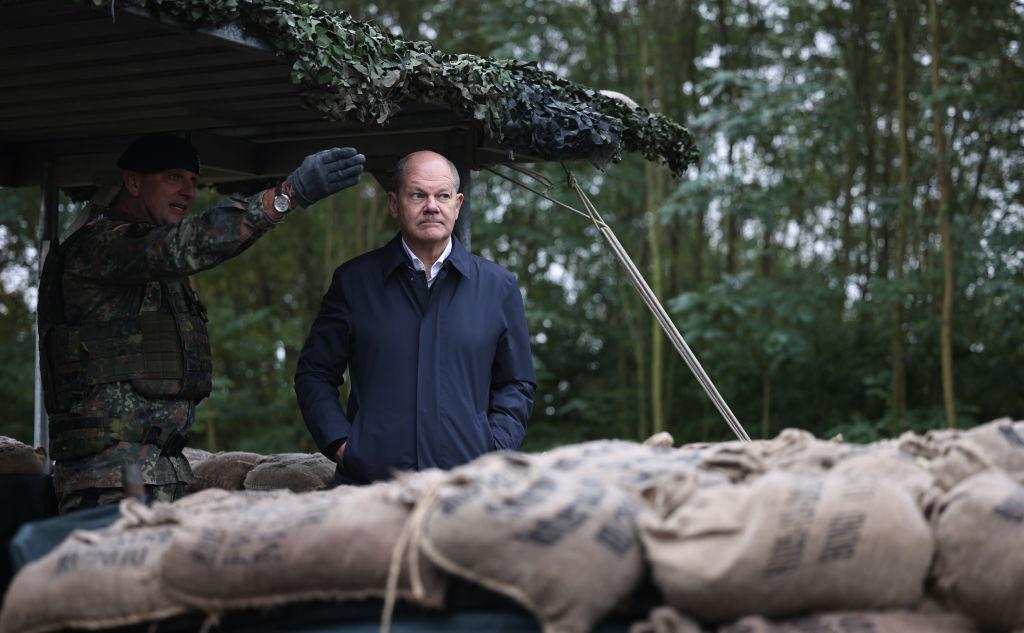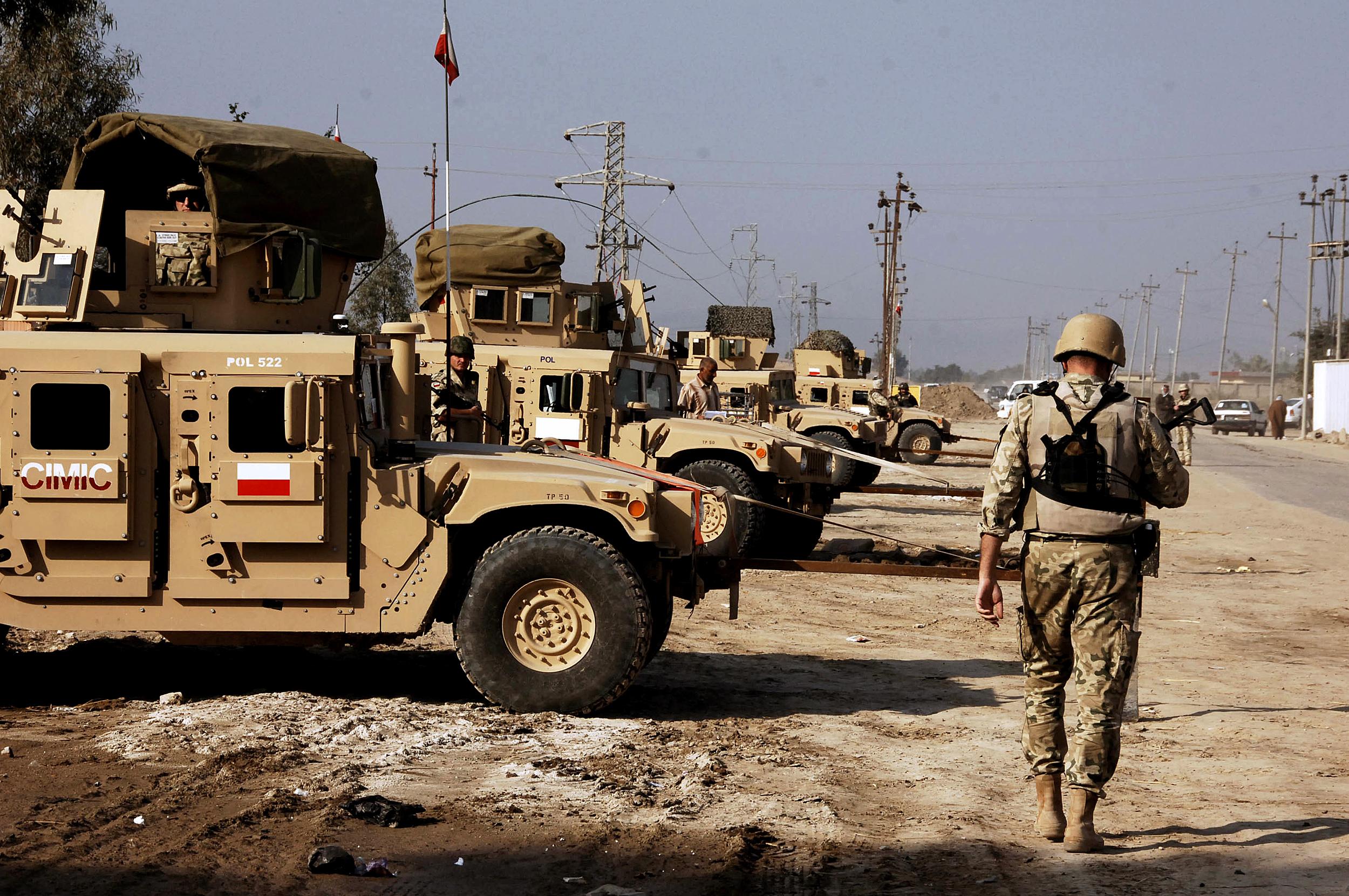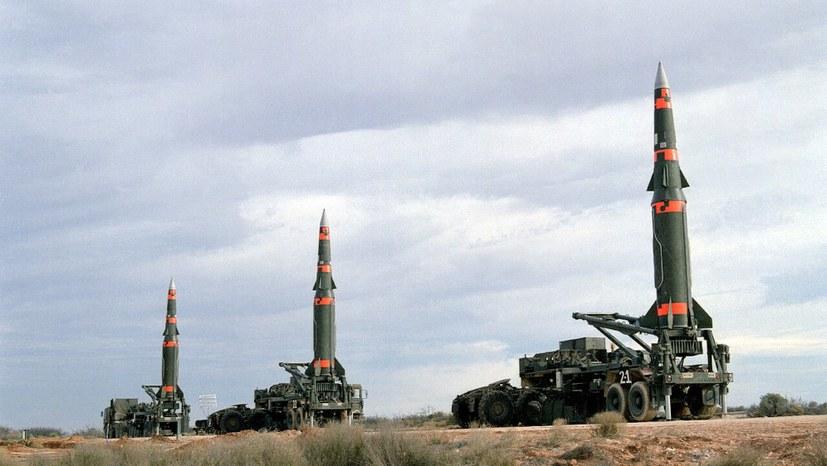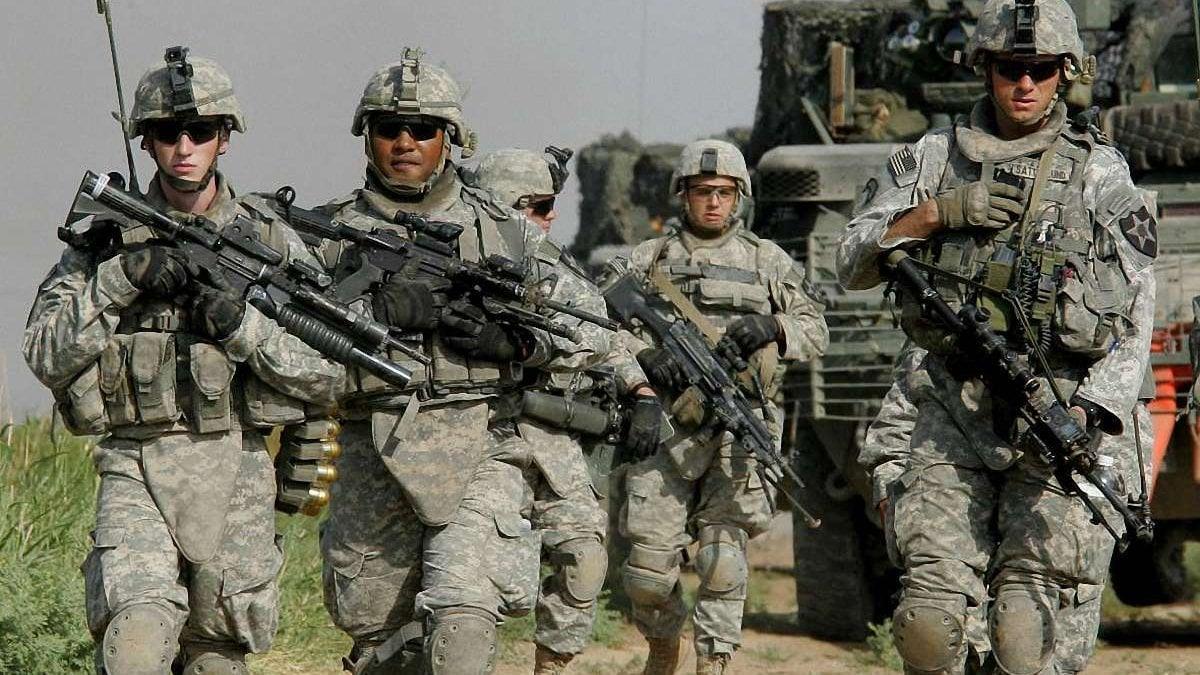Inside NATO's storm: Turbulent world of Alliance's internal conflicts From covert ops to public outrage
NATO, the primary military alliance of Western nations, has announced plans to broaden its operations into the Middle East and the Pacific. However, its performance in even the Eastern European conflict has been lacklustre. Compounding the challenge, recent discord among alliance members has surfaced. The latest controversy — the sabotage of the Nord Stream pipelines — has exposed further fractures within the Western bloc, particularly between Germany and Poland. These key European NATO members, with their historical rivalries, are now at the centre of the turmoil.

NATO, often hailed as the most successful security alliance in history, is struggling with deep-seated internal conflicts. Disagreements over Hungary's policies, Greece's hostility towards Türkiye, France's interventions in Eastern Europe and the Caucasus, and the potential return of Donald Trump to the US presidency are all contributing to the alliance’s turmoil. Beneath the polished exterior, NATO’s foundation is shaky. The alliance’s survival is increasingly dependent on the political and diplomatic missteps of its geopolitical rivals and the absence of a strong ideological alternative. NATO’s strength and future are not as robust as its image suggests, with prospects looking increasingly uncertain.
Trust in Germans: A persistent issue
On August 14, as Kyiv launched a new offensive at Kursk to showcase its military capabilities, Western media released prepped materials on the Nord Stream pipeline sabotage of 2022. German reports revealed that the investigation is increasingly focused on the possibility that Ukrainian individuals were behind the attack. There are also hints suggesting that Ukrainian leadership, including former Commander-in-Chief Valeriy Zaluzhny, might have been aware of the operation's preparations. Notably, Germany’s ARD television has reported suspicions from the German Prosecutor General’s Office that Poland may have played a crucial role in supporting the sabotage.

The materials were reportedly released in connection with the issuance of an arrest warrant for the first Ukrainian suspect. Polish authorities ignored Berlin’s warrant and allowed the suspect to return to Ukraine. This incident is part of ongoing Polish attempts to obstruct the German investigation, including refusing to share surveillance data. Notably, unlike previous reports on the matter, three major German media outlets — official ARD TV, the left-liberal Süddeutsche Zeitung, and the right-liberal Die Zeit simultaneously covered the case. This coordinated coverage seems to signal a message from Berlin to both Ukraine and Poland that NATO partners' covert actions escalating tensions are unacceptable to Germany. Süddeutsche Zeitung also suggested that Berlin might need to reassess its support for Kyiv, questioning how Germany can continue to provide substantial military aid to a country implicated in sabotaging a crucial part of its energy infrastructure.
A German federal government spokesperson confirmed that the investigation's findings would not affect aid to Kyiv. However, a letter from German Finance Minister Christian Lindner revealed on August 17, indicates that military assistance to Ukraine will be reduced due to budget austerity. While approved deliveries will proceed, the Finance Ministry will no longer approve new requests from the Ministry of Defence. Next year, military aid to Ukraine will be cut to four billion euros, and by 2027, it will be reduced to less than a tenth of the current amount. Lindner emphasized that this reduction would not have severe consequences for Kyiv, as the aid would be funded by frozen Russian assets.

Without the references to Poland in the German reports, one might assume that the leak of investigation materials was aimed at justifying cuts to Ukraine’s funding. However, the reality is that the US seems to be shifting the financial burden of the war onto Germany. Meanwhile, Poland faces serious accusations from both its former and current governments. The sabotage of the gas pipelines occurred under the previous pro-American Law and Justice party, while the ongoing investigation is reportedly being obstructed by Polish liberal government agencies and European bureaucrats' allies.
In 2022, some NATO members clearly lacked confidence in Germany's commitment to a firm stance in the Eastern European conflict. This distrust primarily came from Poland and the United States — both of which, even under Trump, viewed Poland as a key European ally — as well as several smaller Eastern European nations.
Germany is now working to address the dangerous precedent set by some NATO members engaging in covert operations against the critical infrastructure of others. In response to the German media’s revelations, the Wall Street Journal, a prominent voice for financial interests, released its own investigation. According to the Journal, the Polish authorities are not to blame. Instead, the paper suggests that Ukrainian patriotic businessmen and officers, allegedly "on a drunken bender," conceived the pipeline sabotage. The report claims that Ukrainian President Zelensky initially endorsed the plan but later ordered its halt. However, it was the willful Zaluzhny who, despite the stop order, proceeded with the operation.
The timing of the German and American media materials suggests they were prepared in advance. They highlight German discontent and the US attempt to shift the narrative away from Berlin’s critique. This redirection conveniently targets Zaluzhny, whose popularity poses a threat to the current Ukrainian leadership. Zelensky's administration, faced with the prospect of Zaluzhny winning elections that were ultimately cancelled, finds it advantageous to divert blame in this manner.
NATO’s internal arms race
Amidst the Polish-German discord, Poland has unveiled ambitious plans to invest a record $125 billion in arms over the next decade, equating to $12.5 billion annually. This comes in addition to substantial arms purchases from the US and South Korea made since the late 2010s. Poland is also making significant concessions to secure American troop deployments on its soil.
This aggressive buildup challenges the current European NATO dynamics. If Poland’s extensive rearmament and military expansion succeed, it could become a key supplier of ground forces within the alliance, rivalling even the United States in scale. Polish leaders anticipate substantial benefits, drawing from their experience in Iraq, where they were awarded a sector of occupation due to their support for the US-led invasion after Germany and France initially opted out.

The bold nature of Warsaw’s military expansion plans takes on additional significance in light of recent reports. The Institute for German Economics released a report on August 19 detailing the contributions of EU countries to the association budget and the subsidies they receive in return. Germany, once again, was the EU’s largest contributor last year, paying €17.4 billion more into the budget than it received — almost double France’s contribution. In contrast, Poland received the most EU funding in 2023, as it did in 2022 and previous years, with a net gain of €8.2 billion from Brussels.
Poland’s substantial military buildup is heavily reliant on continued EU funding, which is increasingly in question due to the German economic downturn. This report, published by the respected Cologne Institute with close ties to major German business, underscores the precariousness of Poland’s military ambitions, dependent on financial support from both the EU and Germany.
Poland’s recent strides in military expansion come amid shifting dynamics within the "collective West." Historically, Warsaw has occasionally outpaced Paris and Berlin during times of their relative reticence. However, the landscape is changing. German leaders have recently ramped up their rearmament efforts and, without public debate, agreed to host US medium-range missiles. This decision is less about a direct threat from Russia and more about recalibrating the balance of power within NATO.
On August 15, Admiral Rob Bauer, head of NATO’s Military Committee, downplayed the risk of an imminent military attack on NATO members, including Poland and the Baltic states. His remarks, reported by the PAP news agency, underscore that Germany's move to deploy US missiles, which is likely unpopular among German citizens, is driven by strategic considerations rather than immediate threats.
Germany’s missile deployment is a response to Poland’s recent completion of an American Aegis Ashore missile defence base. This move reflects a broader trend among NATO-EU countries, which, in their pursuit of American military support, are increasingly engaging in competitive manoeuvres. They vie for US attention and military assets, often sidelining public opinion and granting American soldiers extraterritorial rights. This competitive posture reveals the deeper costs of European "democracy" and sovereignty as these nations navigate the complexities of NATO’s strategic landscape.

Preparing for war or serving overseas interests?
The escalating tensions between Berlin and Warsaw highlight the deepening fractures within NATO, often touted as the world’s most powerful military alliance. This discord is not isolated but part of a broader conflict regarding military spending and roles in the Russian-Ukrainian war.
Poland and its Eastern European allies are pushing for increased military expenditures and a more aggressive stance against Russia. However, they expect the primary financial burden to fall on older European countries, particularly Germany. This demand is not driven solely by a desire for conflict but by a strategic move to align with US interests. The US, seeking to assert its influence and benefit economically, would gain from heightened military confrontations with Russia, which would translate into substantial contracts for the American military-industrial complex.
Moreover, these demands come amidst a backdrop of significant geopolitical shifts: the potential redistribution of European markets in favour of the US, the relocation of European industries overseas due to the ongoing conflict, and the shift of the financial burden of maintaining US troops in Europe to the host nations. The Eastern European faction, known for its staunch pro-American stance, is playing a calculated game. By advocating for these increased military commitments, they hope to secure continued substantial subsidies from the EU’s budget, which have been dwindling in recent years.

Last year, Eastern European nations took the lead in boosting military expenditures within NATO. Poland topped the list with spending reaching nearly 3.9% of GDP, followed by Estonia at 2.7%, Lithuania at 2.5%, and Romania, Hungary, and Finland each at 2.4%. Latvia also contributed significantly at 2.2%. The notable exception was Greece, which, despite its active role against Türkiye, allocated 3% of its GDP to military spending, primarily funded through debt.
In contrast, major NATO members with larger economies showed more modest military budgets. France allocated 1.9% of GDP, Italy 1.4%, Spain 1.6%, and Türkiye, which boasts the second-largest NATO army after the US, spent 1.3% of its GDP.
Adding to this dynamic, Polish President Andrzej Duda proposed in April that NATO countries should be mandated to increase their defence spending from 2% to 3% of GDP. This proposal has received enthusiastic support from the US military-industrial complex. Recent discussions indicate that the same idea is gaining traction among advisors of former and potentially future US President Donald Trump.
Last weekend, Estonian Defence Minister Hanno Pevkur announced that Estonia plans to boost its defence spending to 4% of GDP starting in 2026, surpassing even Germany's military expenditure. This bold declaration was made with a sense of defence of challenge, showcasing Estonia's commitment to military preparedness. However, Pevkur’s statement omits crucial concerns: the potential strain this will place on the already fragile situation in the Baltic region, the true necessity of such an expenditure, and whether it represents the best use of resources.
These questions are far from rhetorical. Despite significant investment from Brussels, the construction of the Rail Baltica railway — an essential infrastructure project intended to connect the Baltic states, Finland, and Poland, and serve strategic military purposes — has been indefinitely delayed. The railway, which has been under development in various forms for nearly fifteen years, is crucial for regional military logistics, including serving as a "rocket road" in times of conflict.
The Estonian Defence Minister’s silence on this delay contrasts sharply with the high-profile spending on defence. The advice of the German strategist Helmuth von Moltke Sr., "Do not build fortresses, build roads," seems to be ignored. The focus on military spending, while significant, overlooks the practical and strategic value of infrastructure projects like Rail Baltica. This apparent disregard highlights a broader issue: the current emphasis seems less about genuine defence needs and more about securing funds from Brussels and fostering ties with Washington.
The growing rift within the European Union reveals a significant divide between the pro-American faction and the so-called "old Europe" countries. While Eastern European states push for increased defence spending, driven by their strategic alignment with the US, several key Western European nations are resisting these demands.

Italian Defence Minister Guido Crosetto recently highlighted that Italy will not meet the NATO threshold of 2% of GDP for military spending until at least 2028. This challenge is echoed by other major EU nations such as France and Spain, where increasing military budgets would necessitate a rapid rise in government debt. This financial strain is a broader issue affecting all major economies of the collective West (the G7), where war funding increasingly relies on borrowing. Recent Bloomberg analysis suggests that if US military spending were to rise from 3.3% to 4% of GDP —a figure gaining traction — the national debt could soar from 99% to 131% over the next decade.
While such investments might offer potential returns if they lead to significant conflicts and subsequent economic boons — as seen in post-World War II and post-Cold War eras — the current strategic landscape does not promise similar opportunities. The prospect of a major enemy surrendering and generating substantial economic recovery appears remote, casting doubt on the feasibility of repeating past economic recoveries through military triumphs.
The views and opinions expressed by guest columnists in their op-eds may differ from and do not necessarily reflect the views of the editorial staff.








